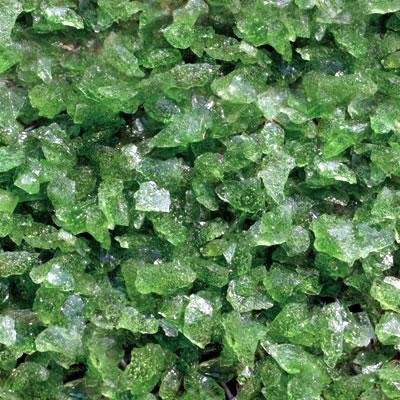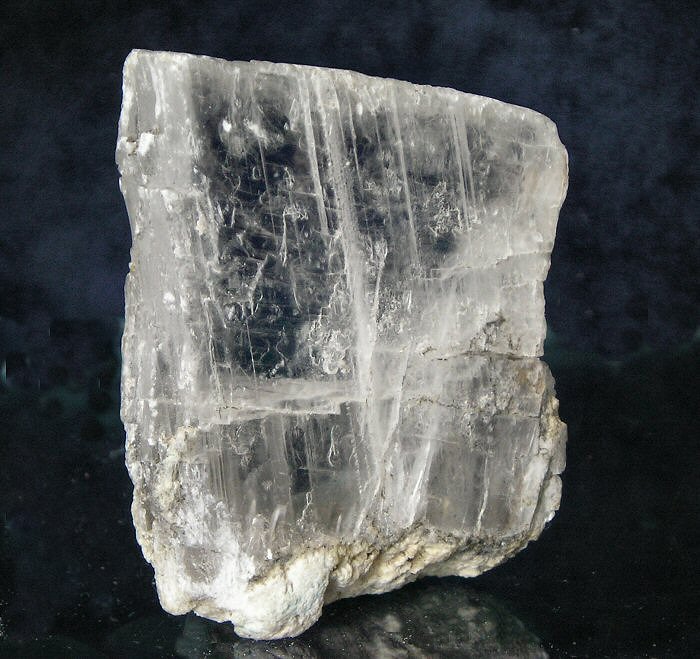
COAL
In Assam, coal occurs in Garo hills, Khasi and Jaintai hills, Mikir hills, Jaipur and Makum. The tertiary coals of Assam are remarkably low in ash but high in sulphur. Assam coal is being consumed at present by the railways, iron and brass foundries, brick kilns, inland water steamer services, tea gardens and other industries in addition to household consumption. Apart from its general uses, Assam coal is eminently suitable for the manufacture of coal distillation products.
OIL AND NATURAL GAS
 The oil producing areas of Assam lie in the upper Assam valley and are geologically confined to the Tertiary Strata - mainly Oligocene. Assam is first state in the country where oil was struck in 1889 at Digboy. At present oil is being tapped at two areas - the Digboy and the Naharkotiya and Moran fields. Two more refineries of considerable size have come up in the public sector at Gauhati and Barauni and the third with a petrochemical complex is under way. A new refinery, Numaligarh refinery (3m. tones capacity) was commissioned on July 9, 1999. The availability of associated natural gas is dependent on the extraction of crude oil. Vast quantities of natural gas are being produced along with the production of crude oil. Only two projects under the "utilization of natural gas scheme" have so far come up in the state. These are the thermal power plant and the fertilizer factory at Namrup.
The oil producing areas of Assam lie in the upper Assam valley and are geologically confined to the Tertiary Strata - mainly Oligocene. Assam is first state in the country where oil was struck in 1889 at Digboy. At present oil is being tapped at two areas - the Digboy and the Naharkotiya and Moran fields. Two more refineries of considerable size have come up in the public sector at Gauhati and Barauni and the third with a petrochemical complex is under way. A new refinery, Numaligarh refinery (3m. tones capacity) was commissioned on July 9, 1999. The availability of associated natural gas is dependent on the extraction of crude oil. Vast quantities of natural gas are being produced along with the production of crude oil. Only two projects under the "utilization of natural gas scheme" have so far come up in the state. These are the thermal power plant and the fertilizer factory at Namrup. LIMESTONE
 Limestone is a very common sedimentary rock of biochemical origin. It is composed mostly of the mineral calcite. Sometimes it is almost pure calcite, but most limestones are filled with lots of other minerals and sand and they are called dirty limestones. The calcite is derived mostly from the remains of organisms such as clams, brachiopods, bryozoa, crinoids and corals. These animals live on the bottom of the sea and when they die their shells accumulate into piles of shelly debris. This debris can then form beds of limestone. Some limestones may have been derived from non-biogenic calcite formation. Although some limestones can be nearly pure calcite, there is often a large amount or sand or silt that is included in the shelly debris.
Limestone is a very common sedimentary rock of biochemical origin. It is composed mostly of the mineral calcite. Sometimes it is almost pure calcite, but most limestones are filled with lots of other minerals and sand and they are called dirty limestones. The calcite is derived mostly from the remains of organisms such as clams, brachiopods, bryozoa, crinoids and corals. These animals live on the bottom of the sea and when they die their shells accumulate into piles of shelly debris. This debris can then form beds of limestone. Some limestones may have been derived from non-biogenic calcite formation. Although some limestones can be nearly pure calcite, there is often a large amount or sand or silt that is included in the shelly debris.The high-grade fossil limestone or 'nummulitic' limestone deposits of Assam are geologically known as 'Syket limestone' as these belong to that groups of rocks. The limestone deposits are confined in areas of Garo hills, united Khasi and Jaintia hills, Cachar hills and Mikir hills. One of the largest outcrops of limestone is at the foot of the Khasi hills. Vast deposits of high-grade limestone are best observed in the Jowai area. Lime stones of the Khasi and Jaintia hills can be used for manufacture of cement and for lime-burning purposes. It can be used in chemical industries and for metallurgical purposes. The limestone deposits of the state offer vast scope for developing innumerable industries where limestone is required.
SILLIMANITE

Sillimanite (also called Bucholzite) is a polymorph with two other minerals: kyanite and andalusite. A polymorph is a mineral that shares the same chemistry but a different crystal structure with another, or other, minerals. Sillimanite is the rarest of the three trimorphs. A variety of sillimanite is called "fibrolite". It is a common fibrous massive form.
The sillimanite deposits of the Nongstoin state in the Khasi hills are world famous from the point of view of quantity and purity of the mineral. Assam is the major producer of this mineral in India and contributes more than 90% of the total production. Corundum is found to occur in association with the sillimanite deposits. Low-grade 'quartz-sillimanite schists' also occur in the same area.
CLAY
 Clay is a naturally occurring material composed primarily of fine-grained minerals, which show plasticity through a variable range of water content, and which can be hardened when dried and/or fired. Clay deposits are mostly composed of clay minerals (phyllosilicate minerals), minerals which impart plasticity and harden when fired and/or dried, and variable amounts of water trapped in the mineral structure by polar attraction. Organic materials which do not impart plasticity may also be a part of clay deposits.
Clay is a naturally occurring material composed primarily of fine-grained minerals, which show plasticity through a variable range of water content, and which can be hardened when dried and/or fired. Clay deposits are mostly composed of clay minerals (phyllosilicate minerals), minerals which impart plasticity and harden when fired and/or dried, and variable amounts of water trapped in the mineral structure by polar attraction. Organic materials which do not impart plasticity may also be a part of clay deposits.Assam is endowed with fairly large reserves of sedimentary white clays as well as Kaolin or 'China clay', which forms an important basic raw material for ceramic or refractory industries. These Clays are found to occur at many places in the Garo hills, Khasi and Jaintia hills and the Mikir hills. This clay is quite suitable for the manufacture of medium to low-grade white wares and other ceramic products like stoneware pipes, sanitary ware, glazed tiles and bricks. The Kaolin deposit near Mawphlang is found to be as good as the Kaolin of corn wall.
GLASS SANDS
 Glass sands are High-quartz sand used in glassmaking; contains small amounts of aluminum oxide, iron oxide, calcium oxide, and magnesium oxide. They are also called as Sand Stones.
Glass sands are High-quartz sand used in glassmaking; contains small amounts of aluminum oxide, iron oxide, calcium oxide, and magnesium oxide. They are also called as Sand Stones.Deposits of fine-grained, white friable sandstones has been located in the coalfields of the Laitryngew andCherapunji areas. The friable quartzite of the Shilllong series around shillong and the Tura sandstones of the Garo hills are suitable for manufacture of sheet glass and fruit glass after washing.
IRON ORE
 Iron ore is a mineral substance which will yield metallic iron (Fe). It almost always consists of iron oxides, the primary forms of which are magnetite (Fe3O4) and hematite (Fe2O3). The image below shows a few specimens of iron ore. The grey metallic ore is magnetite, while the red ore is hematite. The round thing in the middle is a quarter.
Iron ore is a mineral substance which will yield metallic iron (Fe). It almost always consists of iron oxides, the primary forms of which are magnetite (Fe3O4) and hematite (Fe2O3). The image below shows a few specimens of iron ore. The grey metallic ore is magnetite, while the red ore is hematite. The round thing in the middle is a quarter.Occurrence of banded-iron ore have been located in the Chanderdinga hills and Abhayapuri areas in Goalpara district and in the Aradanga-Rangchapara areas on the border of the Kamrup and Khasi and Jaintia hills districts.
Copper
Copper minerals occur in the Umpyrtha and Ranighat areas in the Khasi and Jaintia hills and also in the Mahamaya hills in Goalpara district.
Felspar
 Feldspars are a group of rock-forming tectosilicate minerals which make up as much as 60% of the Earth's crust.Feldspars crystallize from magma in both intrusive and extrusive igneous rocks, as veins, and are also present in many types of metamorphic rock.
Feldspars are a group of rock-forming tectosilicate minerals which make up as much as 60% of the Earth's crust.Feldspars crystallize from magma in both intrusive and extrusive igneous rocks, as veins, and are also present in many types of metamorphic rock.Felspar is a common mineral found to occur in association with granites. Recently workable felspar deposits have been recorded near the Hahim area in Kamrup district.
* Feldspar is a common raw material in the production of ceramics and geopolymers.
* Feldspars are used for thermoluminescence dating and optical dating in earth sciences and archaeology
* Feldspar is one of several abrasive ingredients in Bon Ami, a brand of household cleaner in the USA.
In 2005, Italy was the top producer of feldspar with almost one fifth of world share, followed by Turkey, China and Thailand—reports the International Monetary Fund.
Gold
Gold is reported to occur in sands, gravels and alluvial terraces along some of the rivers in the Lakhimpur, Sibsagar and Darrang districts of Assam. A gold-bearing rock was located at a place about 5 miles southwest of Mawphlang.
Gypsum
Gypsum in the form of selenite crystals and disseminated in shale beds occur at Mahendraganj in the Garo hills and at a few places in the Mikir hills.






.jpg)
